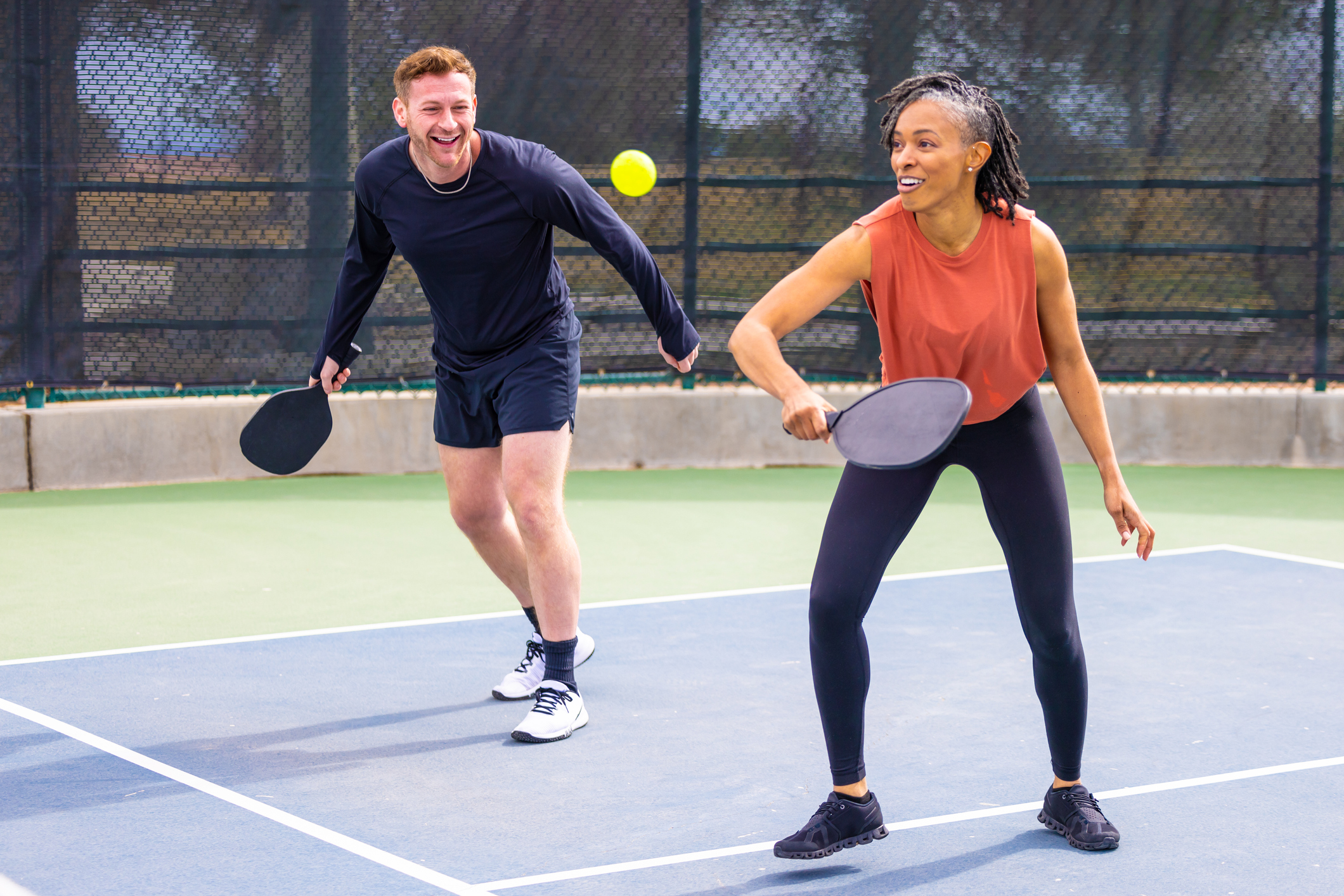
Maybe you’ve heard about the sound it makes. Or that sports stars like Tom Brady and Naomi Osaka are investing in it. Or that everyone seems to be playing it these days.
It’s pickleball, a sport described as a mix of badminton, ping-pong, and tennis. Played on a court with a perforated plastic ball and lightweight paddles, it’s the fastest-growing sport in the U.S., with 8.9 million players according to USA Pickleball. And its appeal is widening — the average player age dropped from 41 to 38 in 2021, with players under 24 comprising the fastest-growing age group.
Pickleball is a social, easy-to-learn game that’s fun for all ages — features likely driving its popularity. The court is smaller and has a slightly shorter net compared to tennis. You serve underhand, and the ball offers a lower, slower bounce. Sounds easy enough, right?
“People shouldn’t take pickleball too lightly,” says Summit Health orthopedic surgeon Andrew Beharrie, MD. “Many take it up because it’s not as strenuous as full-court tennis, but some may not take the risk of injury as seriously.”
Common pickleball injuries
Playing pickleball involves quick starts and stops, pivots, lunging, and bending. These movements and falls can lead to the acute injuries Dr. Beharrie says he sees more often:
- Ankle sprains
- Achilles tendon injuries
- Knee sprains and strains
- Wrist sprains and fractures
- Calf strains
- Hamstring strains
- Lower back strains
- Flares of arthritic conditions
Dr. Beharrie also sees chronic injuries, which tend to result from overuse. Repetitive bending, twisting, or swinging the paddle, for example, can lead to problems such as lower back strain, tennis (or pickleball) elbow, or wrist tendinitis in some players.
That said, pickleball can be a good workout. A study in Science & Sports showed higher heart rate, calorie burn, and enjoyment among people who played pickleball doubles for 30 minutes compared to those who walked for half an hour. Another report in the International Journal of Research in Exercise Physiology saw improved cardiovascular fitness in adult participants who played regularly for six weeks.
“Pickleball is a sport people of all ages can enjoy, and it’s a great way for older adults to stay active,” says Dr. Beharrie.
How to prevent pickleball injuries
With any sport comes the risk of injury, so Dr. Beharrie recommends ways to prevent your next pickleball game from ending on a sour note:
1. Know and listen to your body. Although the game’s average age is dropping, more than half of “core” pickleball players — those who play eight or more times a week — are 55 and older, according to USA Pickleball. Older adults are more likely to have preexisting injuries and health conditions that can be aggravated during play.
For that reason, Dr. Beharrie advises starting slow and knowing when to rest. “Don’t go full speed,” he says. You may want to discuss any preexisting conditions with your provider before giving pickleball a try.
2. Learn proper form. While it’s tempting to just start playing, it’s better to master some basics. Resources like Pickler offer some pointers, and Dr. Beharrie suggests taking lessons if you can.
3. Warm up beforehand. Make time before every game to get the heart rate up and stretch all major muscle groups, working from your ankles to your shoulders. Outside of pickleball, regular physical activity can help with your general fitness.
4. Wear proper footwear. Look for court shoes designed to support playing on a hard surface and the quick side-to-side, front-to-back movement pickleball demands.
What to do if you get injured
Since sports injuries can affect anyone, be ready to act if one occurs. Minor injuries can often be treated at home, following the RICE method (rest, ice, compression, and elevation). Over-the-counter pain relievers can also help. “If you don’t feel better after a couple of weeks, see your primary care provider or ask for a referral to an orthopedic specialist,” says Dr. Beharrie.
Don’t wait to get help if your injury is serious, he adds. “If you notice deformity of the injured area and significant pain with difficulty weightbearing, seek help at an urgent care location or orthopedist for evaluation and treatment.”
